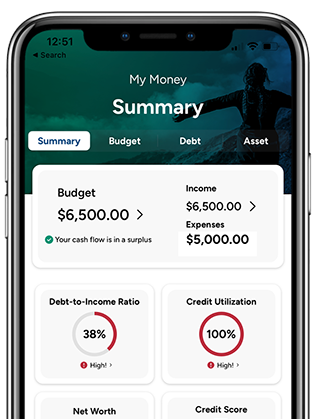(continued from What is Money?)…
How Do I Earn Money?
Key lessons:
- People have to work to earn money
- People put money that they earn from working into a bank account
- Money that comes out of the ATM comes from a bank account
- Some jobs pay more money than others
- Some parents give kids allowances for doing chores
- Some things you do around the house are because you are doing your part in the family and some things are extra work. You earn money for the extra work you do around the house
- You can also get money as a gift for birthdays, holidays, or special occasions
Without assistance, many young children cannot understand the concept that money coming out of the ATM actually comes from a bank account that has to be fed with money that is earned by working. Likewise, it will be just as hard for them to understand that when you swipe your credit card at the store, you are responsible for paying that money back.
Use this section to teach children that they have to work to earn money, the ATM isn’t just a cash dispenser, and that piece of plastic you pull out to make purchases isn’t magic.
One of the best ways to teach your kids about money is to make them work for it (use the allowance guidelines and the chore chart to do so). Kids are much more likely to take better care of their things and spend more carefully if they know the amount of work that goes in to making money.
A Simple Way to Calculate Allowance
A fair way to calculate your child’s allowance (especially if you have more than one child) is to take the child’s age and divide it in half.
6 years old = $3 per week (or per month depending on what you prefer)
This is fun because they know that each birthday gets them a raise in their allowance.
How Do I Spend & Save Money?
Key lessons:
- It is important not to SPEND all your money as soon as you get it
- To SAVE money means to put it away to buy something in the future
- A NEED is something you must have to survive, such as a place to live, a winter coat, or a good pair of shoes
- A WANT is something you would like to have, but you’ll still survive without it, such as toys, candy, or video games
- If you only have a certain amount of money to spend you need to CHOOSE between one or the other – for example, you might not have enough money to buy a new toy AND a piece of candy
The focus of this section is to distinguish between “needs” and “wants.” It is important to help children understand when to save and when to spend.
They need to understand that if they want something they must first earn the money and then budget for it. On top of that, they need to come to the understanding that they can’t “have it all”. If they want a toy then they can’t also have candy. Or if they want a bike they have to save up some money to help pay for it. In the long run, this will establish a much better sense of the benefits of saving and making smart choices.
Let your kids make mistakes. Watching kids make mistakes is hard, but they need to learn the consequences of poor financial planning. Chances are they will blow through their first “paycheck” quickly. When they come begging to you for more money, remind them that they are the ones who chose how to spend their money.
